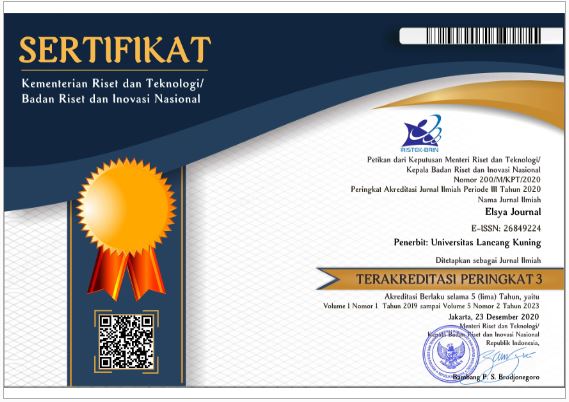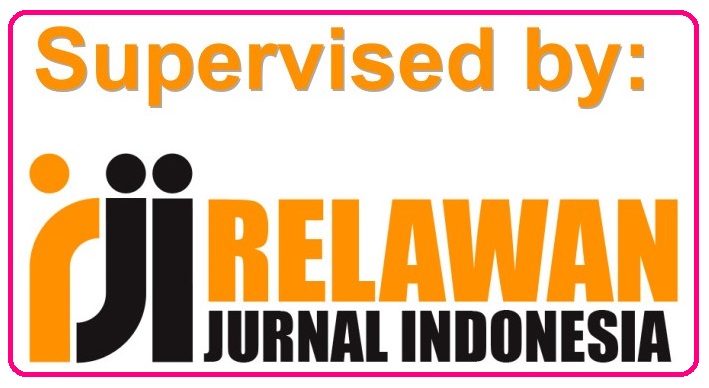Insights into Indonesian Students’ Willingness to Communicate in English in the Classroom
Abstract
English learners need to be willing to communicate in English for them to learn the language successfully. Considering that English has been taught since elementary school in Indonesia, it is interesting to identify how willing students are to communicate in English, especially in secondary school. Thus, this study aimed to know the secondary school students’ willingness to communicate in English in terms of using English in the classroom and linguistic and non-linguistic factors. Furthermore, this study identified whether there was a significant difference based on gender and grade levels. This study used a quantitative method with a descriptive and comparative design. This study was conducted at a private secondary school, with 95 respondents recruited via convenience sampling. As a result, students’ willingness to communicate in terms of using English in the classroom was medium, indicating that students were willing enough to communicate in English. Specifically, the students’ willingness to communicate in terms of linguistic and non-linguistic factors was medium. This shows that students were willing enough to use English regarding linguistic and non-linguistic factors. Moreover, there was no difference based on gender but a significant difference based on grade level, with the highest mean score of 75.55 in grade 7. Thus, since students are willing enough to communicate in English, teachers need to find strategies to help the students to be very willing to communicate in English, especially secondary school students at higher grade levels. Also, future studies on WTC must be done in different regions in Indonesia by considering WTC other factors such as parental involvement, teachers, socio-economic status, anxiety, motivation, or other environment-related factors at various levels or schools.
Downloads
References
Alimorad, Z., & Farahmand, M. (2021). A case study on willingness to communicate in English in the Iranian tertiary educational context. TEFLIN Journal, 32(1), 1-28.
Alemi, M., Tajeddin, Z., & Mesbah, Z. (2013). Willingness to communicate in L2 English: Impact of learner variables. Journal of Research in Applied Linguistics, 4(1), 42-61.
Arshad, Z. (2015). Willingness to communicate in english: A gender-based study. International Journal of English and Education, 4(4), 311-319.
Bar-On, R. (2004). The Bar-On Emotional Quotient Inventory (EQ-i): Rationale, description and summary of psychometric properties.
Bernales, C. (2016). Towards a comprehensive concept of willingness to communicate: Learners’ predicted and self-reported participation in the foreign language classroom. System, 56, 1-12. Retrieved from: https://www.sciencedirect.com/science/article/abs/pii/ S0346251X15001712
Bukhari, S. F., Cheng, X., & Khan, S. A. (2015). Willingness to communicate in English as a second language: A case study of Pakistani undergraduates. Journal of Education and Practice, 6(29), 39-44.
Fukuta, J. (2018). Psychological attributes of unwillingness to communicate and task-based instruction. The Electronic Journal for English as a Second Language, 21(3), 1-11.
Gholami, L. (2015). Willingness to communicate and its relationship with emotional intelligence and gender differences. International Letters of Social and Humanistic Sciences, 52, 87-94.
Heale, R., & Twicross, A. (2015). Validity and reliability in quantitative studies. Evidence-Project Nursing, 18(3), 66-67.
Heidari, K. (2019). Willingness to communicate: A predictor of pushing vocabulary knowledge from receptive to productive. Journal of Psycholinguistic Research, 48(4), 903-920.
Horwitz, E. K., Horwitz, M. B., & Cope, J. A. (1986). Foreign language classroom anxiety. Modern Language Journal, 70(2), 125–132. https://doi.org/10.2307/327317
Idzni, Z. D., & Setiawan, W. (2021). An investigation of students’ willingness to communicate in speaking class in online learning. Project (Professional Journal of English Education), 4(6), 909-921.
Latifah, Z., Sudana, D., & Yusuf, F. N. (2020). Investigating the factors influencing students’ willingness to communicate in English. ISLLAC: Journal of Intensive Studies on Language, Literature, Art, and Culture, 4(1), 91-100.
Maftoon, P., & Najafi Sarem, S. (2015). Gender and willingness to communicate. Iranian Journal of Language Issues, 1(1), 1-18.
Manipuspika, Y. S. (2018). Correlation between anxiety and willingness to communicate in the Indonesian EFL context. Arab World English Journal, 9(2).
Maclntyre, P. D. (2007). Willingness to communicate in the second language: Understanding the decision to speak as a volitional process. The Modern Language Journal, 91(4), 564-576.
Matuzas, M. A. (2021). Factors influencing students’ willingness to communicate in korean elementary school efl classrooms. Networks: An Online Journal for Teacher Research, 23(2).
McCroskey, J. C. (1992). Reliability and validity of the willingness to communicate scale. Communication Quarterly, 40(1), 16-25.
McCroskey, J. C., & Richmond, V. P. (1990). Willingness to communicate: Differing cultural perspectives. Southern Journal of Communication, 56(1), 72-77.
Nadila, S., Rozal, E., & Andriani, R. (2022). Students’ willingness to communicate in English language: A case study [Doctoral dissertation], UIN Sulthan Thaha Saifuddin Jambi.
Pakpahan, M., & Sada, C. (2017). Factors affecting EFL students’ unwillingness to communicate in English in campus. Jurnal Pendidikan dan Pembelajaran Khatulistiwa, 6(6).
Prihartanti, N. (2017). Willingness to communicate in English: A case study of Indonesian university students. Kajian Linguistik dan Sastra, 25(1), 71-81.
Ramli, K., Hidayah, J., Edy, S., & Esmianti, F. (2021). Factors of students’ willingness and unwillingness to speak English in the classroom. Journal of English Education and Teaching, 5(1), 95-109.
Rihardini, A. A., Yaniafari, R. P., & Mukminatien, N. (2021). Students’ willingness to communicate using English: a survey study. Paramasastra: Jurnal Ilmiah Bahasa Sastra dan Pembelajarannya, 8(1), 75-94.
Rindiana, D., & Wulandari, M. (2021). Exploring students’ willingness to communicate in classroom conversation at 7th bilingual class of SMP Islamic Al Azhar 21 Sukoharjo in the academic year 2019/2020 (Doctoral dissertation, IAIN Surakarta).
Rizvić, E., & Bećirovića, S. (2017). Willingness to communicate in English as a foreign language in Bosnian-Herzegovinian EFL context. European Researcher. Series A, 8(3), 224-235.
Sembiring, B. C. (2003). Competency-based speaking class: A convergent-typed syllabus design. Paper presented at the 51st TEFLIN International Conference, Bandung, Indonesia in October 2003.
Susanti, E. (2019). Willingness to communicate in foreign language acquisition. Edukasi Lingua Sastra, 17(2), 56-63.
Taherdoost, H. (2020). Evaluation of customer satisfaction in the digital environment: Development of a survey instrument. In Digital Transformation and Innovative Services for Businnes and Learning, 195-222. IGI Global.
Thatcher, R. W. (2010). Validity and reliability of quantitative electroencephalography. Journal of Neurotherapy, 14(2), 122-152.
Wulandari, S. (2015). Factors influencing students’ willingness to communicate in transactional speaking courses. [Undergraduate thesis, Universitas Kristen Satya Wacana].
- Author retains the copyright and grants Elsya Journal the right of first publication of the work simultaneously licensed under the Creative Commons Attribution-ShareAlike 4.0 License that allows others to share the work with an acknowledgment of the work's authorship and initial publication in this journal
- The author is able to enter into separate, additional contractual arrangements for the non-exclusive distribution of the journal's published version of the work (e.g., post it to an institutional repository or publish it in a book) with the acknowledgment of its initial publication in this journal.
- The author is permitted and encouraged to post his/her work online (e.g., in institutional repositories or on their website) prior to and during the submission process, as it can lead to productive exchanges, as well as earlier and greater citation of the published work (See The Effect of Open Access).









 Elsya Journal is licensed under
Elsya Journal is licensed under 